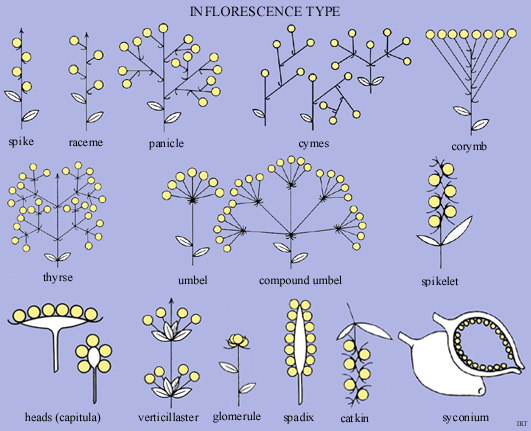



Australian Biological Resources Study
Compiled by A.McCusker
| Back to Glossaries | |
| capitulum (= head): a dense cluster of sessile flowers. adj. capitate.
catkin: a spike in which the flowers are unisexual and without conspicuous perianth. corymb: a racemose inflorescence in which the pedicels of the lower flowers are longer than those of the flowers above, bringing all flowers to about the same level. cyme: an inflorescence in which each flower, in turn, is formed at the tip of a growing axis and further flowers are formed on branches arising below it. adj. cymose. cf. raceme. glomerule: a small compact cluster. adj. glomerulate. inflorescence: the group or arrangement in which flowers are borne on a plant. raceme: an indeterminate inflorescence in which a main axis produces a series of flowers on lateral stalks, the oldest at the base and the youngest at the top. adj. racemose. cf. cyme. spadix: a spicate inflorescence with a stout, often succulent axis. spike: an unbranched, indeterminate inflorescence in which the flowers are without stalks. adj. spicate. syconium: a multiple fruit with a hollow centre, e.g. in figs (Ficus). thyrse: a branched inflorescence in which the main axis is indeterminate and the lateral branches determinate in their growth. umbel: a racemose inflorescence in which all the individual flower stalks arise in a cluster at the top of the peduncle and are of about equal length. verticillaster: a false whorl of opposed cymes. |
 |